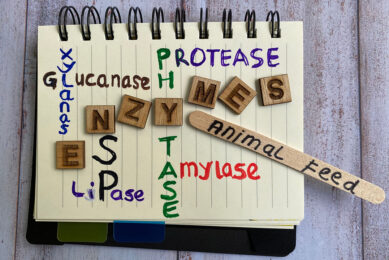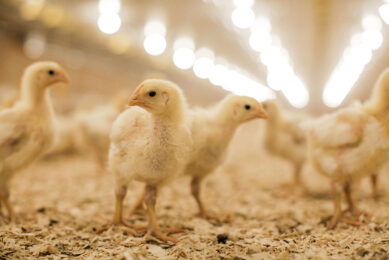Danisco: lower feed costs with enzyme technology

Layer producers looking for lower feed costs with higher fibre feed ingredients can use the latest developments in enzyme technology reported Dr Yingjun Ru at the VIV Asia Eggs conference, Thailand, Bangkok, 12 March 2009.
Using a carefully selected balance of xylanase, amylase, protease and phytase can reduce corn-based layer feed costs by more than $7.50/tonne. The supply of more fibrous feed ingredients into the feed industry has increased with the growth of the bioethanol industry and increased demand for cereal grains into the food industry. Whilst these high-fibre ingredients are potentially a cost effective alternative, their use in layer feed can be limited by the low and often variable digestibility of nutrients.
Dr Ru (pictured), Regional Technical Services Manager, Danisco Animal Nutrition, presented a paper “Recent Advances in Enzyme Technology for More Profitable Egg Production” which outlined how the latest developments in enzyme technology can increase the use of high fibre ingredients into the feed formulation to achieve lower feed costs without depressing laying hen performance.
The paper summarised trials conducted in the Philippines and Australia where adding a combination of xylanase, amylase and protease enzymes (Avizyme® 1500, Danisco Animal Nutrition) allowed the nutrient specification of a corn-soy based diet to be reduced by 5% for energy, protein and amino acids without depressing laying hen performance. In both trials, performance of layers fed medium specification (2610 kcal/kg or 2650 kcal/kg) corn-based diets containing higher levels of fibrous ingredients (wheat pollard or rice bran and copra meal) and supplemented with the enzyme combination were comparable to laying hens fed higher specification (2750 kcal/kg or 2775 kcal/kg) corn-based diets.
Adding new generation E. coli phytases (Phyzyme® XP, Danisco Animal Nutrition) provides egg producers with the opportunity to further reduce feed costs. A trial conducted at the Bangkok Animal Research Centre, Thailand supported using phytase to reduce the specification of the feed formulation for energy and amino acids as well as for calcium and phosphorus. Dr Ru concluded that the key to more profitable egg production lies in combining and optimising enzyme activities according to the feed ingredients used in the formulation.
Related website:
Danisco Animal Nutrition











